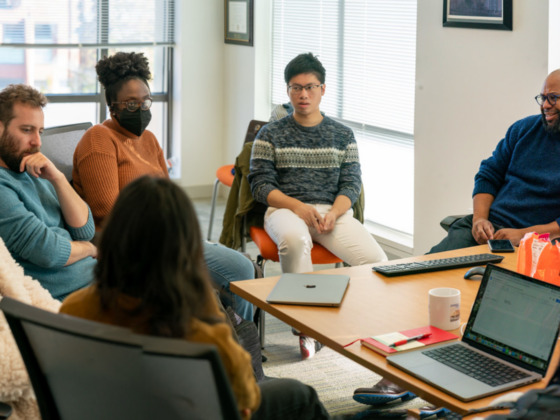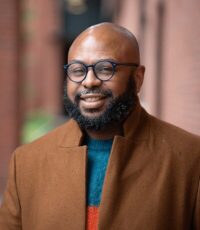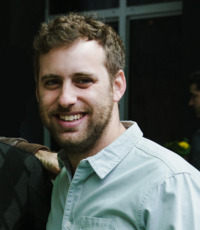News Details
First-of-its-kind study analyzes digital mourning practices of gang-affiliated youth

Authored by: Carson Easterly
Faculty & Research
02/08/24
A new paper co-written by Dr. Desmond Upton Patton, a professor at Penn’s School of Social Policy & Practice (SP2) and Penn’s Annenberg School for Communication, explores the role of images in the online grieving practices of gang-affiliated Black youth.
The study is believed to be the first of its kind and aims to add to a limited body of scholarship. Dr. Patton, a pioneer in the interdisciplinary fusion of social work, communications, and data science, coauthored the new study as senior author.
Due to his groundbreaking body of research, Dr. Patton was one of 13 participants invited to the White House last week for a listening session convened by the Biden-Harris Administration’s Task Force on Kids Online Health and Safety (KOHS Task Force).
The new paper, published in New Media & Society, explores how gang-affiliated Black youth use Twitter content, photos, and emojis – referred to as multimodal tweets – to memorialize the deceased and navigate feelings of grief and loss. “Black grief is not well-understood, both in offline and online spaces,” the authors write.
The paper’s coauthors include researchers at Columbia University, led by SAFElab doctoral student Nathan Aguilar, as well as Dr. Aviv Landau, co-director of SAFElab and research assistant professor at SP2; and Shana Kleiner, LMSW, lab manager of SAFELab. A research initiative at SP2 and Annenberg, SAFELab is focused on examining the ways in which youth of color navigate violence, grief, and joy online and offline.
The researchers analyzed a dataset of Twitter conversations among youth residing in Chicago neighborhoods characterized by high levels of gang activity, taking a critical lens toward the impact of racial segregation and grief on the offline experiences of this population.
Their findings reveal that multimodal tweets are intrinsically linked with the grieving process of gang-affiliated Black youth. This population of young people utilizes photos to speak to those who have passed away and maintain a connection to their lost loved ones. Researchers identified three themes among the multimodal tweets:
- Adoration– Expressing connection and affection for the deceased.
- Maintaining reputation – Safeguarding the social status and image of the deceased.
- Perseverance – Embodying a commitment to moving forward and embracing life.
The study offers insights that can inform the development of prevention and intervention strategies to support gang-affiliated youth experiencing grief and loss. “Attempting to understand language and imagery posted online by gang-affiliated youth is also an attempt to understand their internal meaning-making and memorialization process when presented with violence, loss, and hardship,” the authors write.
Elected last year to the National Academy of Medicine, Dr. Patton holds joint appointments at Annenberg and SP2 as the Brian and Randi Schwartz University Professor, along with a secondary appointment in the Department of Psychiatry at the Perelman School of Medicine. In addition, he is a social worker in the Department of Child and Adolescent Psychiatry and Behavioral Sciences at Children’s Hospital of Philadelphia.
At the KOHS Task Force listening session on January 31, Patton joined academic experts, youth advocates, civil society leaders, and practitioners at the White House to discuss advancing the health, safety, and privacy of children online.
About Penn’s School of Social Policy & Practice (SP2)
For more than 110 years, the University of Pennsylvania School of Social Policy & Practice (SP2) has been a powerful force for good in the world, working towards social justice and social change through research and practice. SP2 contributes to the advancement of more effective, efficient, and humane human services through education, research, and civic engagement. The School offers five top-ranked, highly respected degree programs along with a range of certificate programs and dual degrees. SP2’s transdisciplinary research centers and initiatives — many collaborations with Penn’s other professional schools — yield innovative ideas and better ways to shape policy and service delivery. The passionate pursuit of social innovation, impact, and justice is at the heart of the School’s knowledge-building activities.
People
-

Desmond Upton Patton, PhD, MSW
31st PIK University Professor, School of Social Policy & Practice and the Waldo E. Johnson Jr. Professor, Annenberg School for Communication
Contact
-

-

Shana Kleiner, LMSW
Manager, Center for Responsible Innovation & Technology
Contact
Email